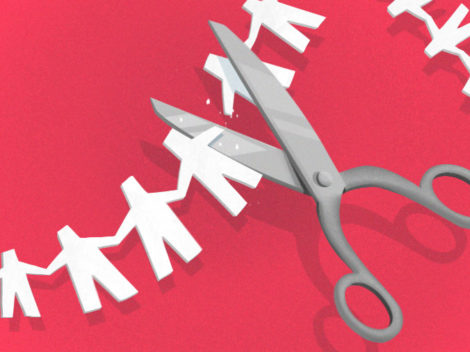If you’ve asked a millennial how their investments are doing lately, chances are they’ll either laugh or reply with a blank stare.
But a rank of new apps hope to change that.
Follow Crunchbase News on Twitter & Facebook
In the last few years, apps like Acorns, Stash, Betterment, Clink and Robinhood—among countless others—have infiltrated the consumer “save and invest” space. Essentially, where savvy savers of yesteryear might open a taxable account with thousands of diligently-saved dollars, investing today requires little more than a few dollars to start.
While this new class of investment apps slightly differ in branding and investment strategies, all of these startups aim to strengthen people’s financial knowledge while making investing accessible to all.
The pioneer of the “round up” saving and investing app scene, Acorns, is currently the largest and most popular micro-investing app around. By linking your debit and credit cards, Acorns will round up your small purchase amounts—avocado toast included—and invest the difference. The typical Acorns user makes less than $100,000 per year.
“We think of it as the easiest way to save and invest,” CEO Noah Kerner tells Crunchbase News. “You answer a couple of question to help us build your portfolio based on your risk tolerance—we have five portfolios, ranging from conservative to aggressive— all comprised of ETFs,” a theory designed by Nobel Prize-winning economist Harry Markowitz.
“So you’re not picking stocks yourself, which is very important,” Kerner stressed.
This is called “passive investing,” and is likely the quickest and easiest way to get into investing without having too much experience or resources. It’s perfect for a debt-laden millennial just starting out in their financial career.
Kerner noted that Acorns’ major goal is getting the average user to save every unspent penny.
Acorn And Friends
Next up is Stash, a New York City startup that’s similar to Acorns in that it helps you microinvest small amounts. However, there are no roundups involved; instead, you’re encouraged to invest based on your values.
If you’re a renewable energy advocate, you can pick a complementing portfolio to your general ETFs and invest in clean energy stocks. Given that the average Stash investor is 29-years-old with household income of $45,000 per year, the millennial-geared marketing makes sense.
Cofounder and CEO Brandon Krieg noted that with millennials being so cause-focused, Stash customizes portfolios with focus on their passions, without having to pick individual companies to invest in. Choices include stocks in clean energy, tech innovation, or “defending America,” in which you can invest in patriotic, weapon-providing companies.
Indeed, customization is probably one of the most wide-reaching trends in finance tech at the moment.
“There’s a lot of focus on delivering insight and experiences to customers based on who they are, instead of bombarding them with every possible bit of information or feature available,” Valarie Hamm Carlson, Vice President of Brand of the digital bank Simple, told us.
“We’re leveraging what we know about our customers,” Carlson continued. “Both in terms of their usage of our product but also their mindsets, to drive our design and roadmap.”
According to Stash’s youth-heavy stats, the company currently has more than 1.2 million customers spread across the U.S., with 86 percent having no prior investing experience.
“Through Stash, this community is given the tools to not only break into the investment world but also develop smart financial habits for the long-term,” the company told Crunchbase News.
“Investment apps are a great way for Gen X and Y to get started with investing,” Abraham Okusanya, Founder of investment & retirement research firm FinalytiQ, told Crunchbase News. “They make investing really easy and accessible, literally at your fingertips.”
However, Okusanya noted, that the sums invested are minuscule.
“This type of investing doesn’t go far enough to amount to any meaningful amount on their own, but at least it’s a start,” he said. “The danger is that the user gets deluded into thinking they are investing. It’s a way to dip one’s toes in, with very little consequence.”
Both Acorns and Stash cost $1 a month for small accounts, and 0.25 percent after an account reaches $5,000.
“There issue with the cost is that for many users, at that rate they’ll need about $5,000 in rounded-up amounts for the account to be cost-effective,” Okusanya explained. “That’s a lot of rounding up!”
Trust
With Acorns and Stash having already established themselves on the scene, up-and-coming financial apps must rely not only on branding but gaining new users’ trust.
“We’re helping people feel confident with their money,” Carlson said of Simple. “That means we’re pretty realistic about the relationship they have with their finances and design our product to meet them where they’re at.”
As for the others in this space, while diverse portfolios make up the bulk of their offerings, investment platforms such as the mobile-Robinhood boasts itself as the first “completely free” app for trading individual stocks. This gives the app a new twist on investing, considering users’ accounts don’t have maintenance fees or trade commissions.
But there is a catch to the free ride. Robinhood doesn’t offer investment research or portfolio advice, making it tricky to use for an investing newbie.
Whether investment apps can help millennials “get into” long-term investing is still too early to call, Okusanya said.
“I think there’s a place for these apps,” Okusanya said. “Frankly, it’s hard to really say whether they are ultimately good or bad. Only time will tell.”

Stay up to date with recent funding rounds, acquisitions, and more with the Crunchbase Daily.






![Illustration of a guy watering plants with a blocked hose - Global [Dom Guzman]](https://news.crunchbase.com/wp-content/uploads/quarterly-global-3-300x168.jpg)
67.1K Followers